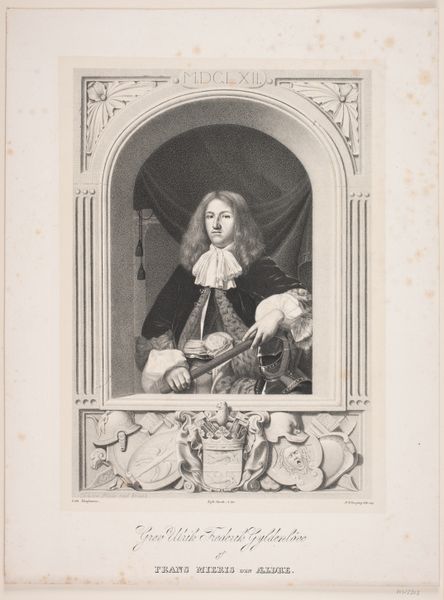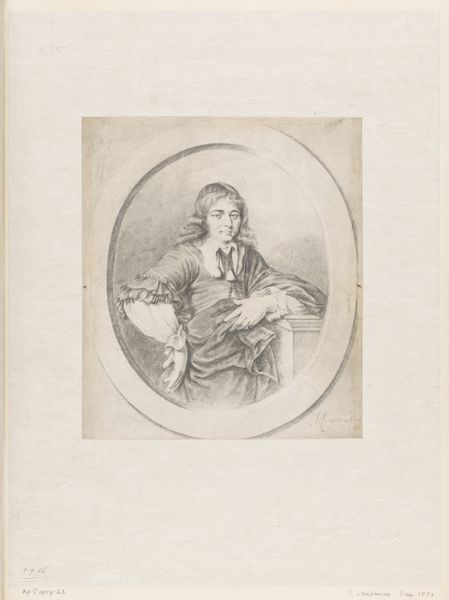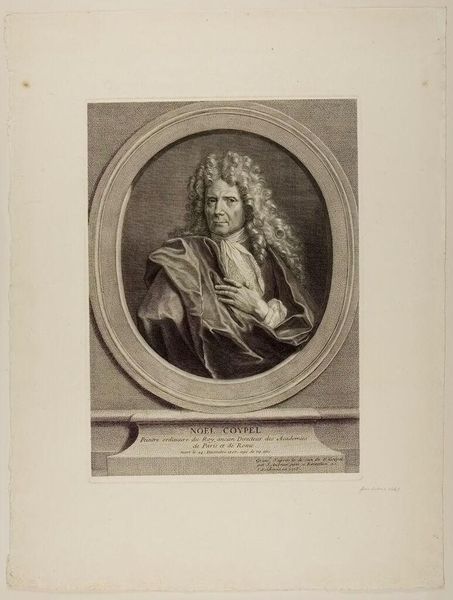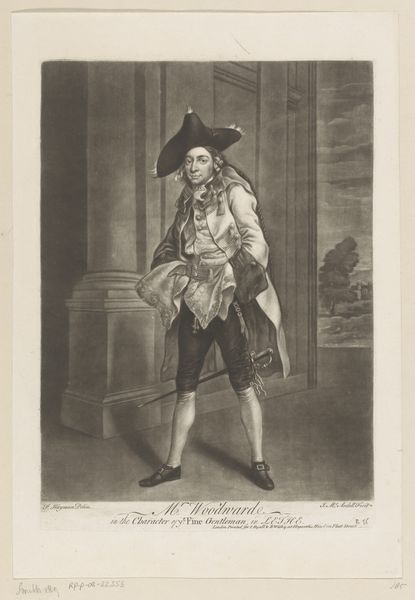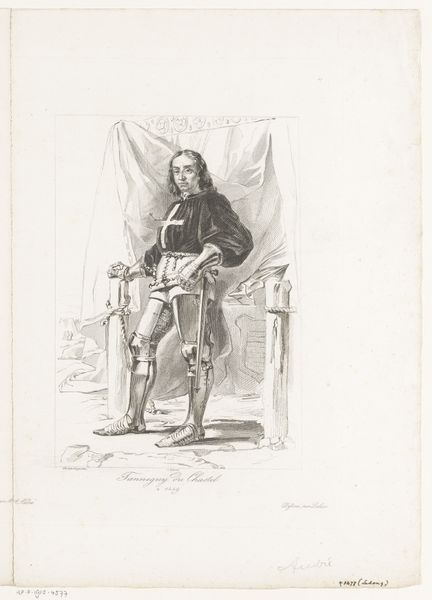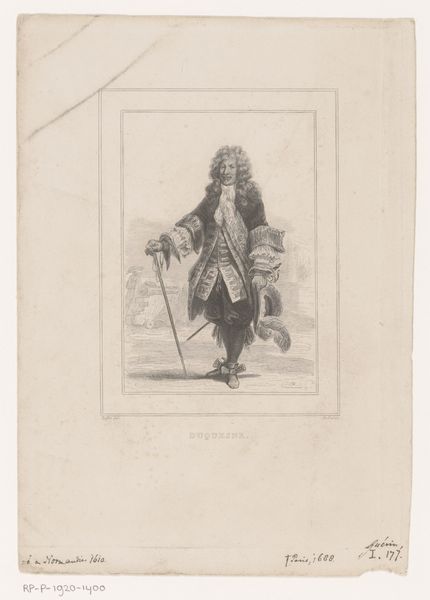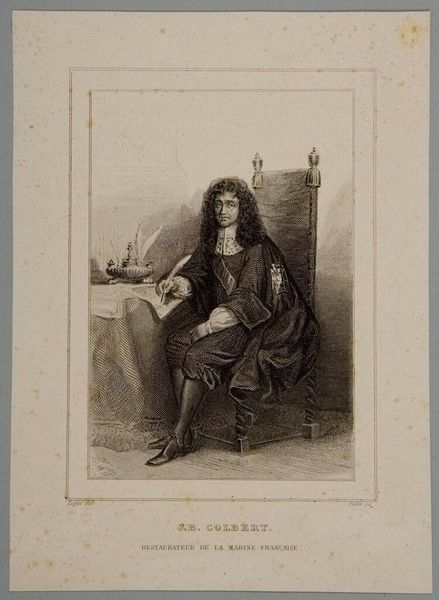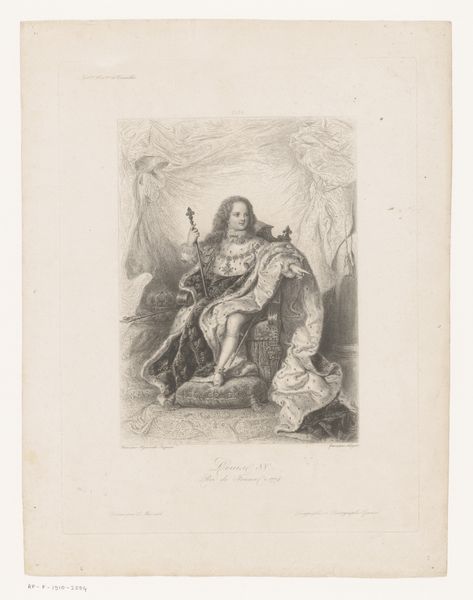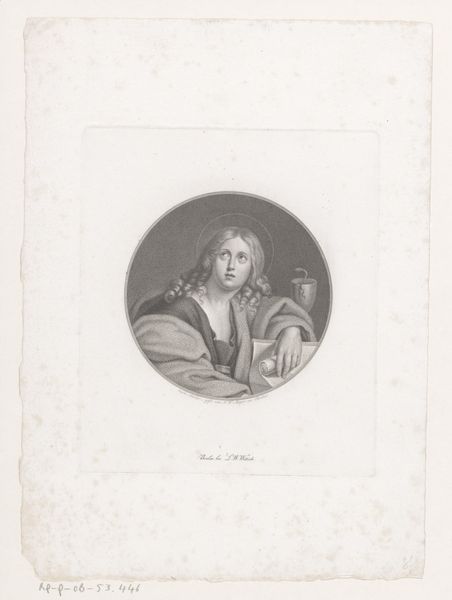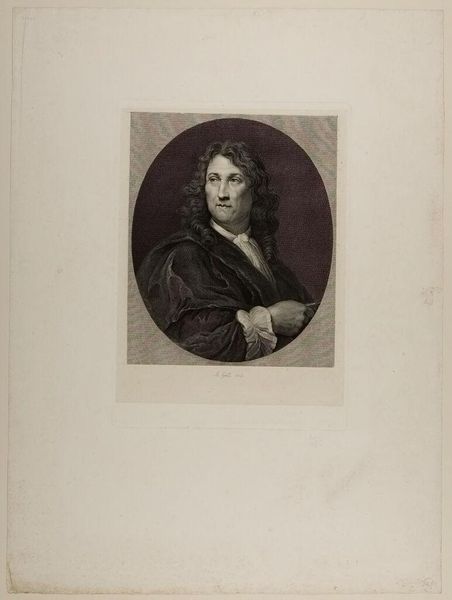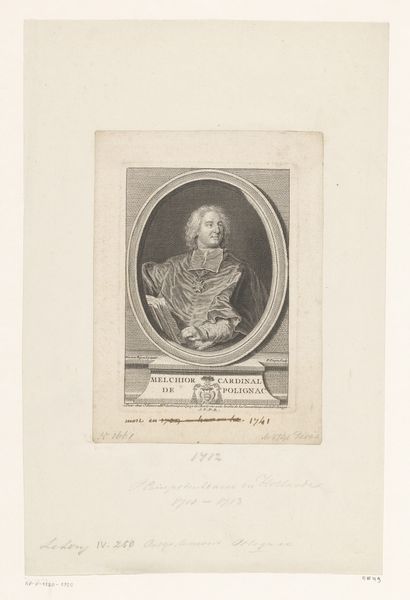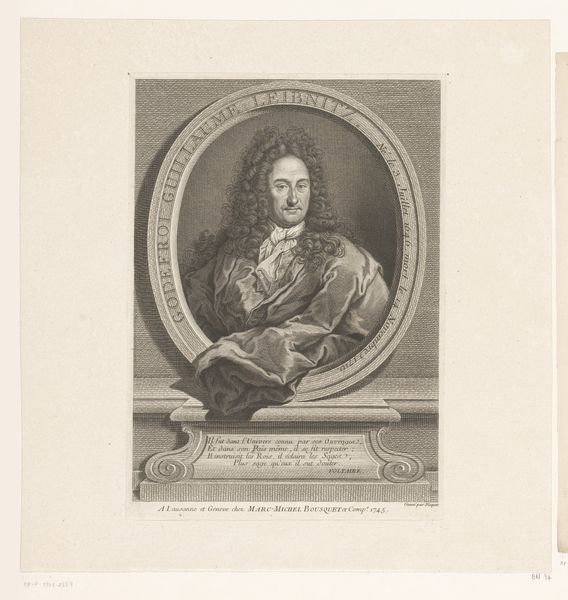
Dimensions: height 472 mm, width 342 mm
Copyright: Rijks Museum: Open Domain
Curator: Before us, we have a print of "Portret van Willem III, prins van Oranje," or Portrait of William III, Prince of Orange, from before 1873. Carel Christiaan Antony Last is credited with its creation, and it resides here in the Rijksmuseum collection. Editor: It's remarkably detailed for a print. The composition feels staged, theatrical even. All of the architectural background, combined with the regal symbols, suggest this individual held significant power. Curator: The abundance of classical imagery—columns, meticulously rendered drapery, the almost obligatory crown resting on that plush cushion—absolutely signifies status and dynastic lineage. These were intentionally chosen visual cues for audiences of the era. Note also how engraving and possibly charcoal were used in its creation. Editor: Indeed. And there’s an interesting duality here. We have symbols of governance set alongside symbols of earthly materialism. He’s even sporting the very popular puffy sleeves. I find it telling that he gestures outward with his hand; almost welcoming the public, or perhaps laying claim to something in his dominion. Curator: That hand gesture could also be symbolic of leadership, guidance even, directing his realm toward a promising destiny. These prints circulated widely, reinforcing specific narratives around William's leadership and divine right to rule, not to mention the skilled labor necessary to produce multiple copies for consumption by an eager public. The choice of graphite for subtle shading must have been cost effective. Editor: And looking at his clothing - it signifies not only wealth and status but almost flaunts access to global trade networks. Materials of a superior and distinctly elite kind would have set him apart from everyday commoners. Even the engraver benefits from his station! Curator: Precisely, so many workers involved from the designers, producers and distributors. It all reveals economic structures and a network of artisans shaping royal power through their own production. Editor: Considering that I was so immediately drawn to it—this piece illustrates how powerful a set of carefully curated symbols can be to communicate, influence, and leave an indelible impression across generations. Curator: And it does so in the most economical means imaginable, in reproducible prints available on the art market.
Comments
No comments
Be the first to comment and join the conversation on the ultimate creative platform.
